Beyond the classic cup of joe lies a world of exciting coffee creations just waiting to be explored. From whipped delights to decadent desserts, fun coffee recipes offer a playground for coffee lovers to experiment with flavors, textures, and presentations. Whether you’re a seasoned barista or a curious coffee newbie, this guide will inspire you to elevate your coffee routine and impress your friends with your newfound skills.
- Iced Coffee Adventures: Cool Down with Creative Concoctions
- Hot Coffee Delights: Cozy Up with Warming Flavors
- Coffee Cocktails: Elevate Your Evenings with Spirited Creations
- Mastering the Art of Coffee Creation: Tips and Techniques
- Conclusion: Embrace the Joy of Coffee Experimentation
- Unleash Your Inner Coffee Artist
Iced Coffee Adventures: Cool Down with Creative Concoctions
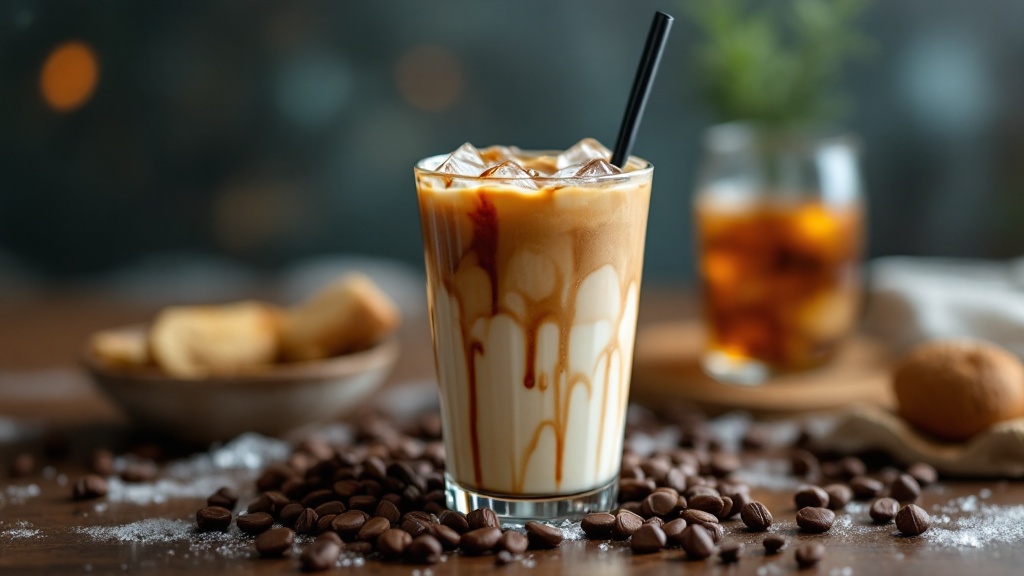
When the temperature rises, iced coffee becomes the ultimate refreshment. But why settle for plain iced coffee when you can transform it into a masterpiece? Dalgona coffee, the internet sensation, is a perfect example. This whipped, cloud-like coffee, made with equal parts instant coffee, sugar, and hot water, is layered over cold milk for a visually stunning and delicious treat. Its creamy texture and rich coffee flavor make it a delightful indulgence on a hot day. Another popular choice is cold brew, where coffee grounds are steeped in cold water for 12-24 hours. This method extracts a smoother, less acidic coffee concentrate that’s perfect for customizing with milk, syrups, or even a splash of sparkling water for a refreshing twist.
For a truly unique experience, try a Vietnamese Iced Coffee. This rich and sweet beverage combines strong, dark roast coffee with condensed milk poured over ice. The sweetness of the condensed milk perfectly balances the bitterness of the coffee, creating a harmonious blend of flavors. Or, take a trip to Italy with an Affogato Freddo. This chilled version of the classic dessert involves pouring a shot of espresso over a scoop of gelato or ice cream. The contrasting temperatures and textures create a delightful sensory experience, perfect for a summer afternoon treat.
Cold Brew Coffee Extraction
Cold brew coffee preparation involves a significantly different extraction process compared to traditional hot brewing methods. The extended steeping time at low temperatures (typically between 12 and 24 hours) leads to a substantially different chemical profile in the final product. Unlike hot brewing, where high temperatures rapidly extract both soluble and insoluble compounds, cold brew extraction favors the solubilization of specific flavor compounds. This results in a concentrate characterized by reduced acidity and bitterness, a smoother mouthfeel, and a more pronounced sweetness and lower astringency. The extraction rate is slower, leading to a more selective extraction of desirable components while minimizing the extraction of undesirable compounds, such as chlorogenic acids which contribute significantly to the perceived acidity and bitterness of hot brewed coffee.
- Coffee-to-water ratio typically ranges from 1:8 to 1:12, significantly less concentrated than hot brew.
- Ground size should be coarse, preventing over-extraction and sediment.
- The cold brew concentrate is usually diluted with water or milk before serving, adjusting the strength.
- Lower acidity results in a less harsh taste, making it suitable for sensitive stomachs.
- Reduced astringency contributes to the smooth and less bitter profile.
- Cold brew can be stored in the refrigerator for up to two weeks.
| Coffee Type | Preparation | Flavor Profile | Unique Feature |
|---|---|---|---|
| Dalgona Coffee | Whipped instant coffee, sugar, hot water | Creamy, rich coffee flavor | Layered over cold milk |
| Cold Brew | Steeped 12-24 hours, coarse grounds | Smooth, less acidic, sweet | Diluted with water or milk |
| Vietnamese Iced Coffee | Dark roast coffee, condensed milk | Rich, sweet, balanced bitterness | Served over ice |
| Affogato Freddo | Espresso over gelato/ice cream | Contrasting temperatures, creamy | Chilled dessert-like treat |
Hot Coffee Delights: Cozy Up with Warming Flavors
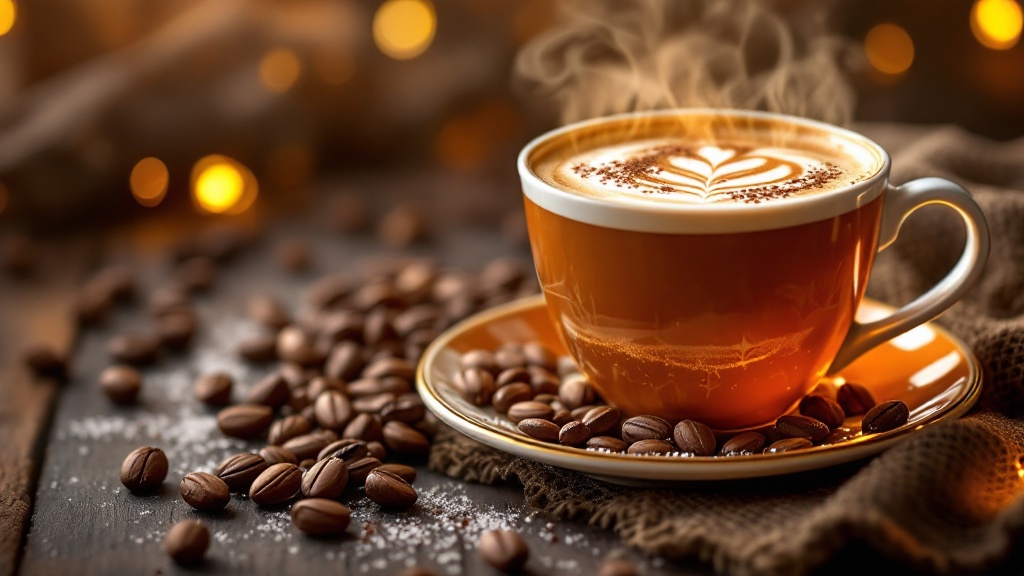
When the weather calls for comfort, hot coffee recipes offer a warm embrace. A spiced latte is a classic choice, combining the rich flavor of espresso with the warming spices of cinnamon, nutmeg, and vanilla. Steamed milk adds a creamy texture and enhances the overall experience. For a more adventurous flavor profile, try a cardamom latte or a turmeric latte, incorporating spices known for their unique aromas and potential health benefits. Don’t forget the classic Mocha, combining rich chocolate syrup with espresso and steamed milk, topped with whipped cream for an indulgent treat.
For those who prefer a simpler approach, a flavored latte is an easy way to elevate your hot coffee game. Experiment with different syrups like caramel, hazelnut, or vanilla to find your perfect flavor combination. For a touch of elegance, try a café au lait, a French classic consisting of equal parts strong brewed coffee and steamed milk. Its simplicity and smooth texture make it a timeless favorite. And if you’re feeling adventurous, explore the world of flavored coffee beans, offering options like cinnamon, vanilla, or even chocolate-infused beans for a pre-brewed flavor boost.
Espresso Extraction Optimization
Achieving optimal espresso extraction requires precise control over several key parameters. The most crucial factor is the grind size, directly impacting the surface area of the coffee grounds exposed to the water. Too coarse a grind results in under-extraction, yielding a weak, sour cup with underdeveloped flavors. Conversely, too fine a grind leads to over-extraction, producing a bitter, astringent brew. The ideal grind size is typically determined through experimentation, adjusting the setting on the grinder until a desirable balance of sweetness, body, and acidity is achieved. This process is highly dependent on the specific espresso machine used, the coffee bean’s roast level, and the ambient temperature and humidity.
- Water temperature significantly impacts extraction; aim for 195-205°F (90-96°C).
- Coffee bean age and storage conditions affect grind size requirements.
- Dose (amount of coffee grounds) is another crucial variable; adjust alongside grind size.
- A good espresso shot should extract around 20-25% of the coffee’s soluble solids.
- Use a scale to measure both coffee dose and espresso yield for consistency.
- Espresso machine pressure should be consistently around 9 bars.
Coffee Cocktails: Elevate Your Evenings with Spirited Creations
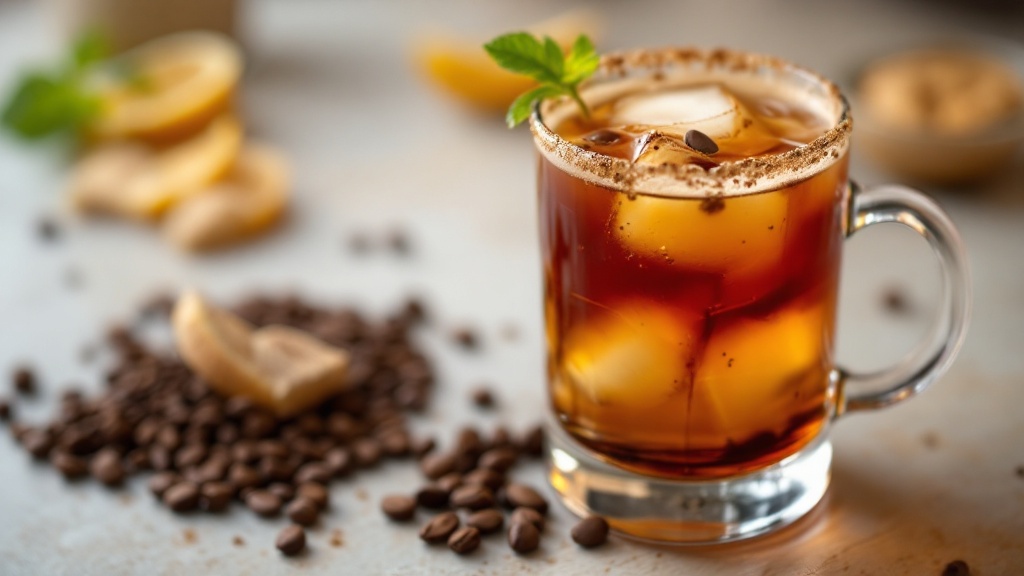
Coffee isn’t just for mornings anymore. Coffee cocktails offer a sophisticated and flavorful way to enjoy your favorite beverage in the evening. The Espresso Martini is a classic example, combining vodka, coffee liqueur, and espresso for a bold and energizing drink. Its smooth texture and rich coffee flavor make it a popular choice for after-dinner indulgence. For a warmer option, the Irish Coffee is a timeless classic. Combining hot coffee, Irish whiskey, sugar, and a layer of whipped cream, this comforting cocktail is perfect for cozy evenings.
For those who prefer a less traditional approach, try a Coffee Negroni, swapping out gin for coffee liqueur in the classic cocktail. Its bitter and complex flavor profile is sure to impress. Or, venture into the world of coffee-infused spirits, like coffee-infused rum or vodka, which can be used as a base for various creative cocktails. These infusions add a unique depth of flavor to your drinks and open up a world of possibilities for experimentation. Remember to consider the caffeine content of your coffee cocktails, especially if you’re sensitive to caffeine’s effects in the evening.
Espresso Martini Extraction Optimization
Achieving optimal espresso extraction is crucial for a superior Espresso Martini. The ideal extraction yields a balanced blend of sweetness, acidity, and bitterness, directly impacting the cocktail’s overall flavor profile. Under-extraction results in a sour and weak drink, while over-extraction leads to bitterness and astringency, overpowering the other components. Factors influencing extraction include grind size, dose, and brew time, all of which must be carefully calibrated to the specific espresso machine and bean type. For example, a finer grind size generally increases extraction, while a coarser grind reduces it. A common starting point for a double shot (approximately 14-18 grams of coffee) in a 58mm portafilter might be a grind size of 20-22 on a commercial grinder scale, with a brew time of 25-30 seconds at 9 bars of pressure. However, these parameters are highly dependent on the specific grinder and espresso machine utilized, as well as the density and roast level of the beans. Regular backflushing (using a backflush tablet or solution) of the group head according to the manufacturer’s recommendations (typically once daily) is essential for maintaining optimal machine performance and ensuring consistent espresso extraction.
- Water temperature significantly impacts extraction; aim for 195-205°F (90-96°C).
- Pre-infusion (a short period of low-pressure saturation) can improve evenness of extraction.
- Bean freshness is paramount; use freshly roasted beans within their optimal window.
- Regular grinder calibration ensures consistent grind size and thus, extraction.
- Experimentation and tasting are key to finding the optimal extraction profile for your specific setup.
- Consider using a scale to precisely measure both coffee dose and espresso yield.
Mastering the Art of Coffee Creation: Tips and Techniques
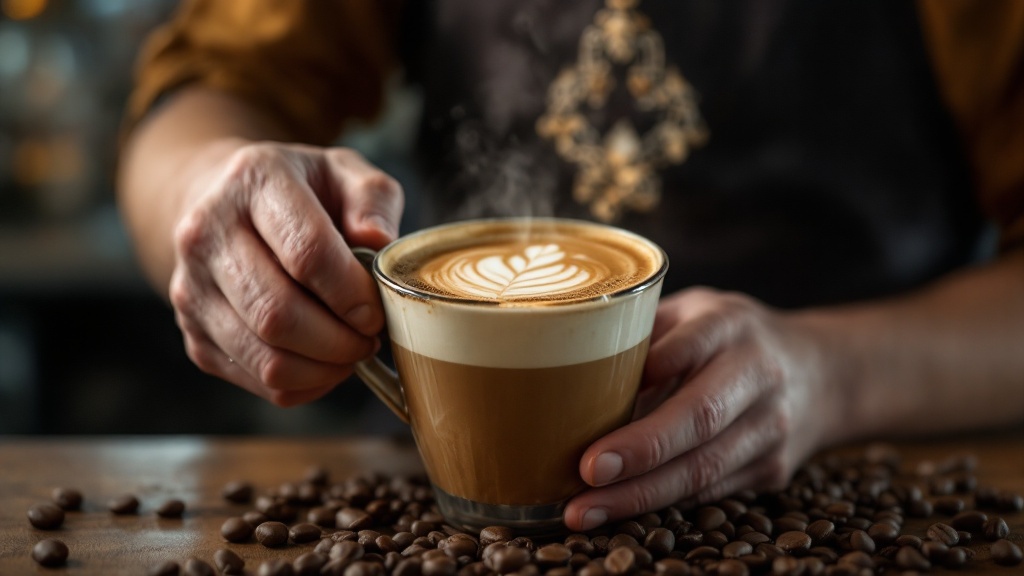
Creating fun coffee recipes isn’t just about throwing ingredients together; it’s about understanding the fundamentals. Invest in a burr grinder for consistent coffee grounds, which is crucial for balanced flavors in any recipe. Temperature control is also essential, especially when steaming milk. Aim for a temperature between 140-160°F (60-70°C) to avoid scalding the milk and compromising its texture. Use fresh, high-quality ingredients, from freshly roasted coffee beans to premium syrups and spices, to elevate the flavor of your creations.
Experiment with ratios to find your perfect balance. Adjust the coffee-to-milk ratio in lattes or the coffee-to-water ratio in brewed coffee to suit your taste preferences. Don’t be afraid to try new flavor combinations and techniques. Layering is a fun way to add visual appeal to your iced coffee creations. Pour your espresso or coffee concentrate slowly over the back of a spoon onto the layered milk and syrups to create distinct layers. Follow coffee influencers and baristas on social media for inspiration and learn new techniques to enhance your coffee-making skills.
Dialing In Espresso Extraction
Achieving optimal espresso extraction requires precise control over several variables, primarily grind size, dose, and extraction time. The goal is to extract the ideal range of soluble solids from the coffee grounds, typically between 18-22%, resulting in a balanced and flavorful shot. Grind size directly impacts extraction time; a finer grind yields a faster extraction, while a coarser grind slows it down. The dose, or the amount of coffee grounds used, influences the concentration of the final espresso. Extraction time, measured from the first drop to the end of the extraction, is crucial; an under-extracted shot will taste sour and acidic, whereas an over-extracted shot will be bitter and astringent. Professional espresso machines often allow adjustments to water pressure and temperature, further affecting extraction.
- Ideal water temperature generally ranges from 195-205°F (90-96°C) for optimal extraction.
- A common starting point for dose is 18-21 grams of coffee for a double shot (producing 36-42 grams of espresso).
- Extraction time should ideally fall within the range of 25-35 seconds for a balanced shot.
- Using a scale to measure both coffee dose and espresso yield ensures consistency and allows for precise adjustments.
- Espresso extraction is highly dependent on the coffee bean’s origin, roast level, and freshness.
- Observe the espresso’s color and crema; a rich, reddish-brown color with a thick, tan crema indicates a well-extracted shot.
Conclusion: Embrace the Joy of Coffee Experimentation
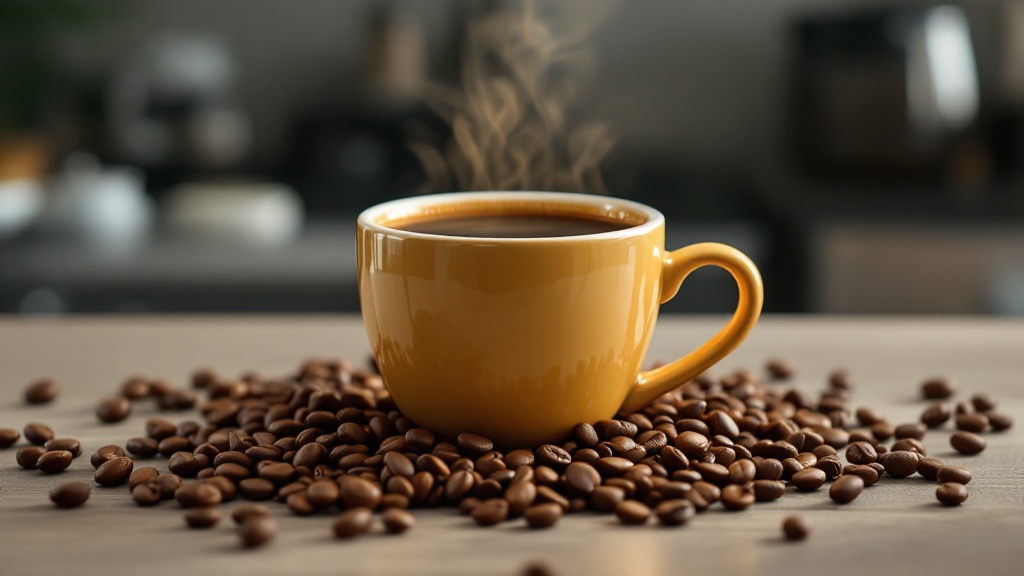
Fun coffee recipes offer a world of possibilities for coffee lovers to explore their creativity and personalize their coffee experience. Whether you’re whipping up a Dalgona coffee, crafting a spiced latte, or shaking up a coffee cocktail, these recipes bring a sense of joy and excitement to your daily routine. So, gather your ingredients, embrace experimentation, and unleash your inner barista. The world of coffee awaits your creative touch.
Dial-In Espresso Extraction
Achieving optimal espresso extraction relies on precise manipulation of several key variables. The primary parameters are grind size, dose (amount of coffee grounds), and brew time. Grind size directly impacts the surface area of the coffee grounds exposed to the water; a coarser grind results in faster extraction, yielding a sour, under-extracted shot, while a finer grind slows extraction, potentially leading to a bitter, over-extracted result. The dose influences the coffee-to-water ratio, impacting both the strength and extraction yield. Finally, brew time, typically between 25-30 seconds, is a direct consequence of the interaction between grind size and dose, and serves as a crucial indicator of proper extraction. A well-dialed-in espresso will exhibit balanced acidity, sweetness, and bitterness, with a desirable crema.
- Water temperature significantly impacts extraction; aim for 195-205°F (90-96°C).
- Espresso machine pressure should be consistently around 9 bars for optimal results.
- Tamping pressure is crucial for even water distribution; aim for 30-40 lbs of pressure.
- Use a scale to measure both coffee dose and espresso yield for precise ratio control.
- Taste is the ultimate judge; adjust grind size iteratively until desired flavor profile is achieved.
- Consider bean freshness and roast level as factors affecting extraction time and flavor.
Unleash Your Inner Coffee Artist
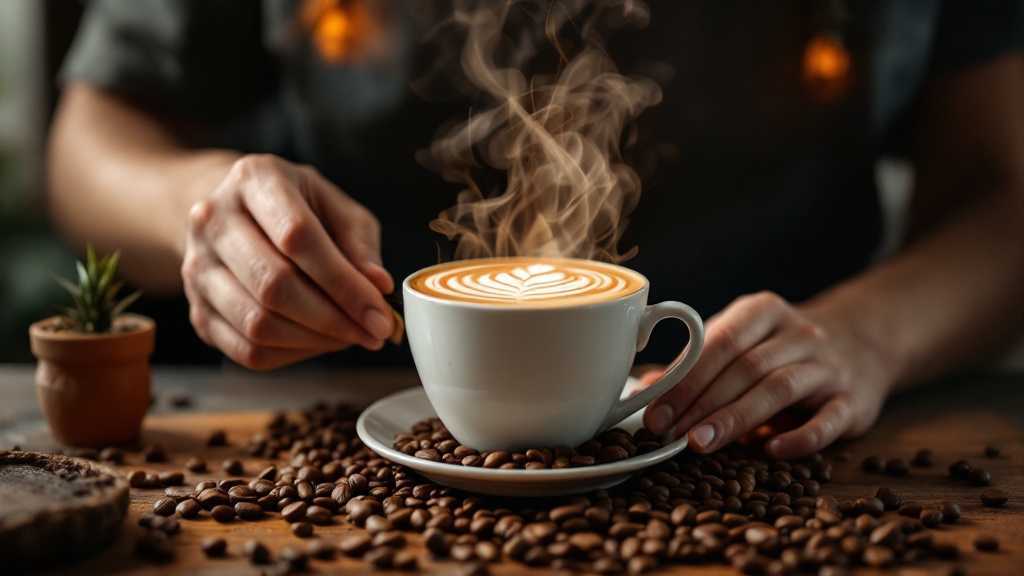
From the invigorating chill of iced creations to the comforting warmth of a hot beverage, the world of coffee offers a vast landscape of flavors waiting to be discovered. Whether you’re craving the whipped delight of Dalgona coffee, the smooth richness of cold brew, the sweet indulgence of Vietnamese iced coffee, or the comforting embrace of a spiced latte, there’s a coffee concoction to suit every mood and palate. By mastering these simple yet transformative techniques, you’ve gained the power to elevate your everyday coffee routine from mundane to magnificent.
Remember, the journey doesn’t end here. These recipes are merely starting points. Don’t be afraid to experiment with different flavors, syrups, spices, and toppings. Let your creativity be your guide as you personalize each cup and discover your own signature coffee creations. Impress your friends, delight your family, and most importantly, treat yourself to the extraordinary experience that a truly exceptional cup of coffee can provide.
So, ditch the ordinary and embrace the extraordinary. Step into your kitchen, grab your favorite beans, and start brewing your coffee masterpiece today. The perfect cup is waiting – create it!
Optimizing Coffee Extraction
The extraction yield of coffee significantly impacts the final beverage’s quality, influencing its taste profile and overall satisfaction. This process involves the transfer of soluble compounds from the coffee grounds into the brewing water. Over-extraction leads to bitterness and astringency, resulting from the leaching of undesirable compounds like tannins and chlorogenic acids. Conversely, under-extraction results in a weak, sour, and underdeveloped cup lacking body and flavor complexity. Achieving optimal extraction requires careful consideration of several parameters, including grind size, water temperature, and brew time.
- Ideal extraction yield generally ranges from 18-22%, though this can vary based on bean type and brewing method.
- Grind size directly impacts extraction; finer grinds extract faster, while coarser grinds extract slower.
- Water temperature significantly influences extraction; hotter water extracts more quickly and can lead to over-extraction if not carefully managed.
- Brew time is crucial; extending brew time beyond optimal can result in over-extraction and increased bitterness.
- Using filtered water removes impurities that can negatively impact flavor and extraction.
- Different brewing methods (pour over, French press, espresso) require adjustments to grind size, water temperature, and brew time to achieve optimal extraction.
| Key Aspect | Grind Size | Water Temp | Brew Time |
|---|---|---|---|
| Extraction Impact | Finer grinds extract faster | Hotter water extracts quicker | Longer time risks over-extraction |
| Optimal Range | Varies by method | 195-205°F (90-96°C) | 18-22% extraction yield |
| Brewing Method | Fine for espresso | Adjust for French press | Shorter for pour-over |

